While the surviving ‘gray’ F-15A-to-D Eagles may be among the oldest assets in Israeli Air Force (IAF) service, these powerful fighter jets remain very much at the top of their game. Now, on the occasion of the anniversary of one of the two squadrons flying the F-15A-to-D — known by its Hebrew name Baz, or Falcon — a friend of The War Zone, photographer Amit Agronov, brings us some stunning imagery of the jets, fully armed, and in their element.
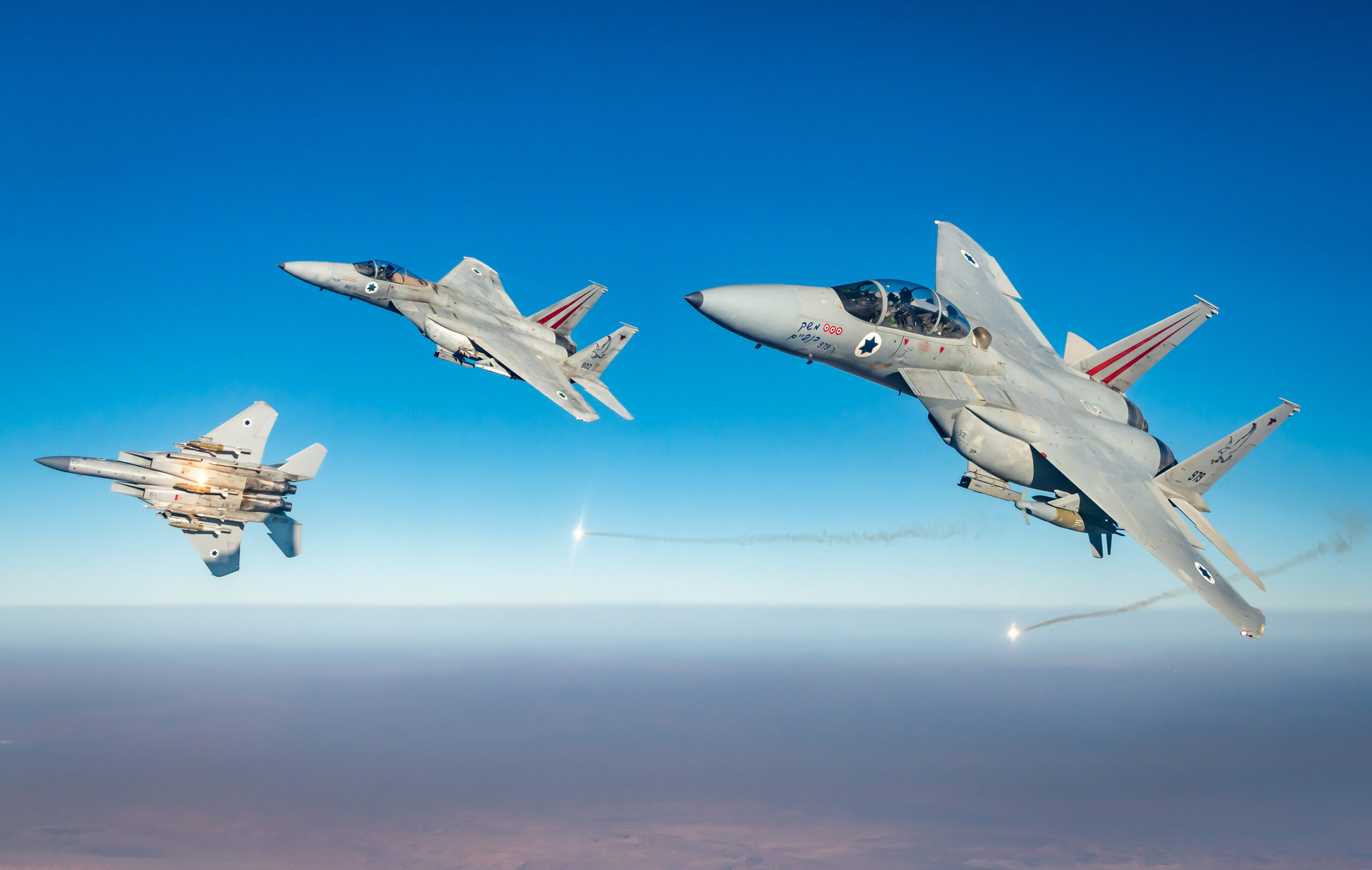
This photo sortie was scheduled to mark 40 years since the full re-establishment of 106 Squadron “Tip of the Spear” as an F-15 operator in 1982, against the backdrop of the Lebanon War, which saw the IAF clash repeatedly with the Soviet-supplied Syrian Arab Air Force. In fact, work to establish the unit had begun the previous year, in 1981, and its personnel began flying the Baz in 1982, initially embedded within 133 Squadron “Knights of the Twin Tail.” Over Lebanon, the ad-hoc combined unit was credited with dozens of aerial kills. On June 13, 1982, the “Tip of the Spear” finally began operating as an independent unit under the command of Brig. Gen. (Res.) Joel Feldschuh.
Today, those two squadrons continue to fly the Baz, in much-upgraded form, from Tel Nof Air Base in central Israel, just south of Tel Aviv. The jets in the accompanying photos all hail from 106 Squadron “Tip of the Spear,” best evidenced by the twin red stripes that are applied on the inside surfaces of the tail fins. The squadron badge also appears on the inside of the fins, while the bird of prey motif is common across the Baz fleet.



The fact that these jets — a mix of single-seat F-15Cs and a two-seat F-15Ds — are fully armed with live weapons is itself interesting. The weapons loads also reflect the fact that the ‘fighter’ versions of the Israeli Eagle routinely fly offensive air-to-ground missions as well as the type’s original primary air superiority role, and can also flex between the two. In fact, for decades the Baz has been a multi-role platform. You can read about this unique history here.
All three jets carry a mix of AIM-7 Sparrow and AIM-120 Advanced Medium-Range Air-to-Air Missiles (AMRAAM) on the stations attached to their conformal fuel tanks (CFTs) — a feature no longer found on U.S. Air Force F-15C/Ds. The unusual combination of the older semi-active radar-homing Sparrow and the active-radar AMRAAM is something we have discussed before in the context of the IAF. The Sparrow, despite its age, offers certain advantages — including a much larger warhead than the AIM-120.
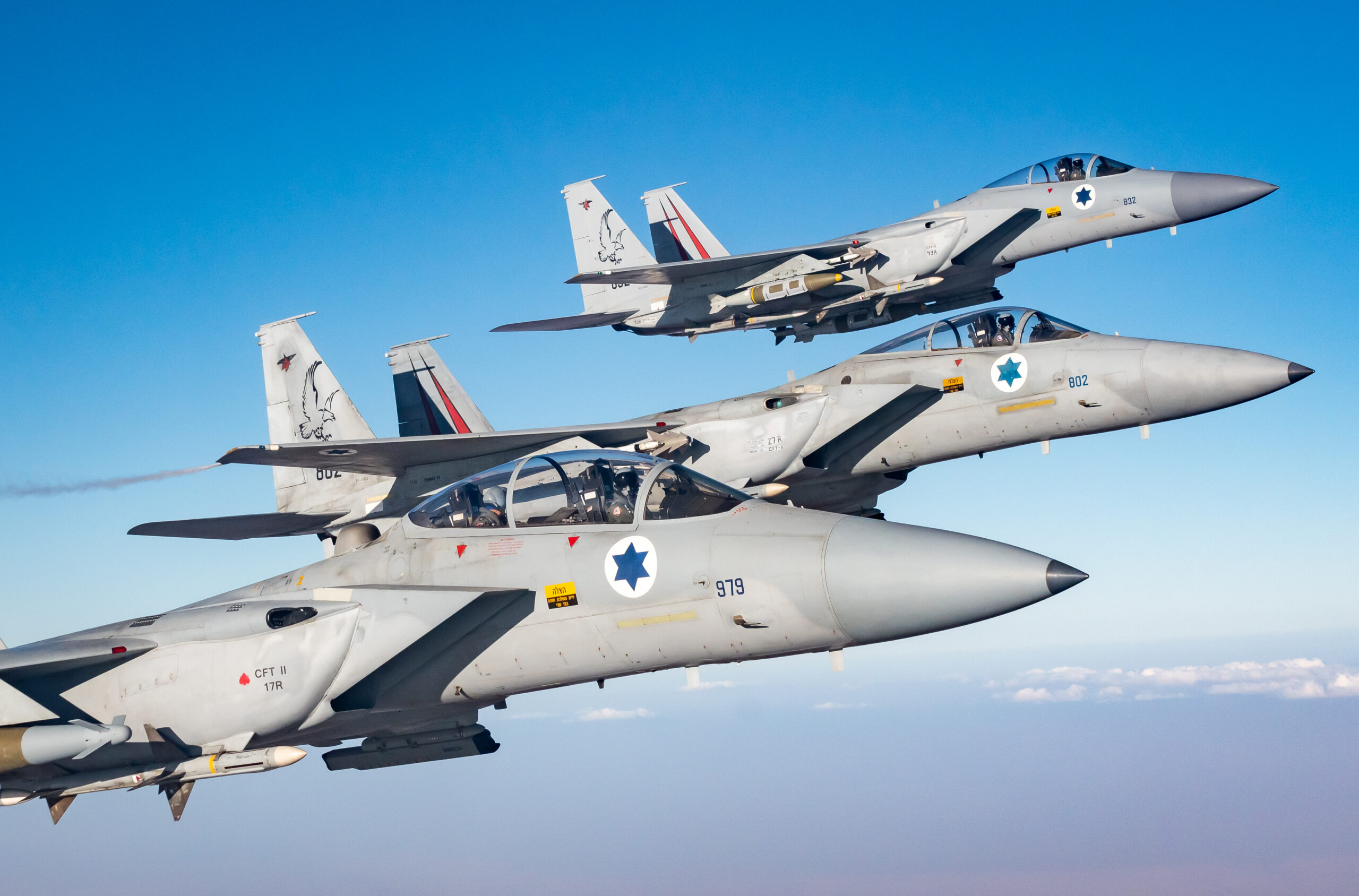


For close-range engagements, two of the jets additionally carry locally made Rafael Python AAMs. These, too, are considered among the most capable weapons in their class. It’s not clear whether the missiles fitted are Python 4 or 5s, which look very similar. However, Python 5 has several enhancements, including a new seeker that is thought to provide better performance against drones — a persistent threat to Israel.
That the Baz has a legendary air-to-air combat record is made clear by the kills markings on two of the jets: serial 979 has three Syrian roundels applied on its forward fuselage, serial 802 wears four, while serial 832 bears half a roundel, indicating a shared aerial victory.
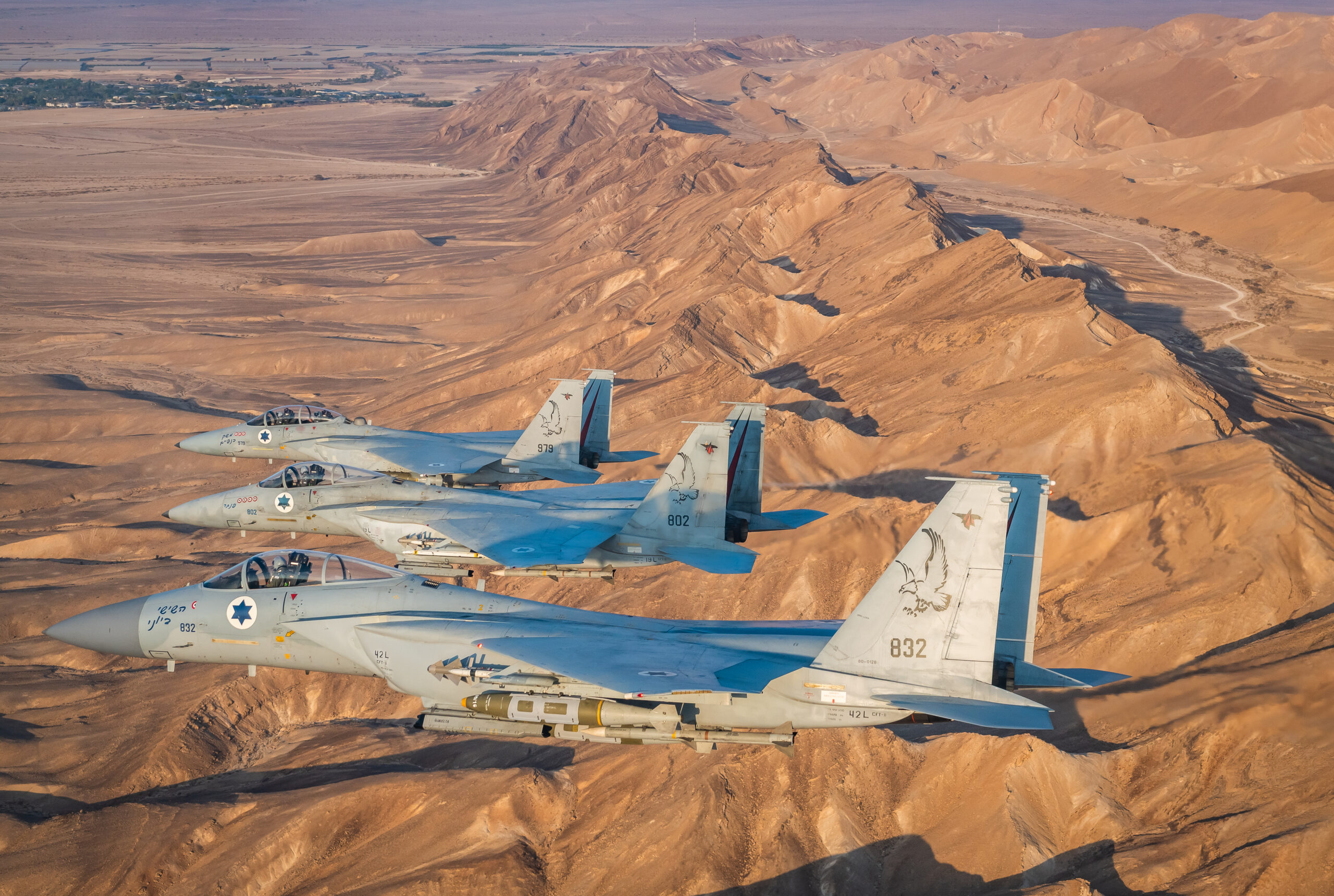
Also hanging from the CFTs are examples of the Elta-8222 electronic warfare self-protection pod, widely considered the best of its kind anywhere in the world. These are the same pods used by U.S. aggressors to help replicate the most advanced aerial threats and they have also been used to great effect by other operators, notably the Indian Air Force.
Two of the F-15s are also configured for precision strike, one being armed with three GBU-31 Joint Direct Attack Munitions (JDAM) and the other with a pair of 2,000-pound Rafael SPICE standoff weapons on the underwing pylons. Fitted with a wing kit for extended range, the SPICE has an electro-optical seeker with a scene-matching algorithm that allows it to engage targets autonomously, offering the launch aircraft a true ‘fire and forget’ capability.
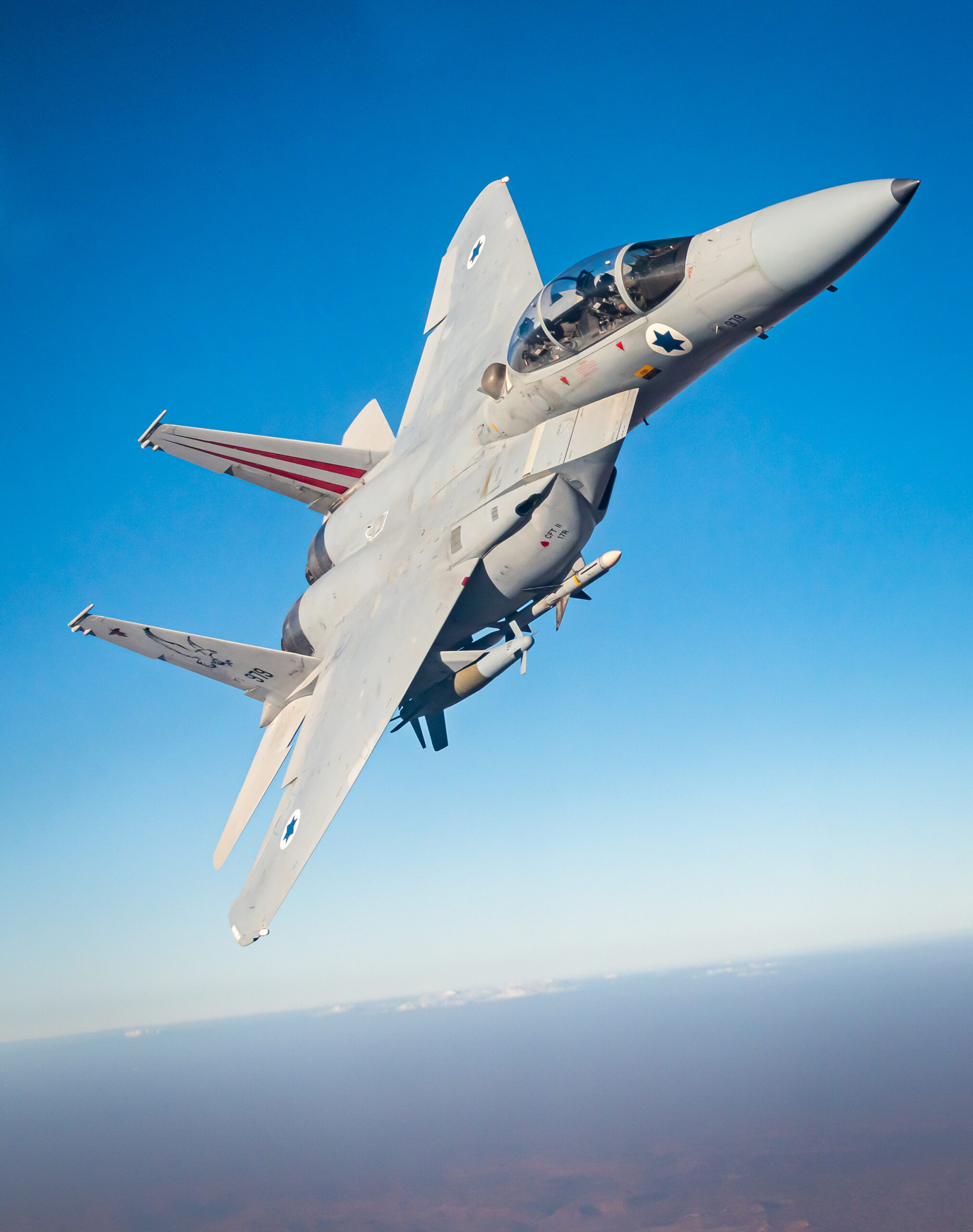

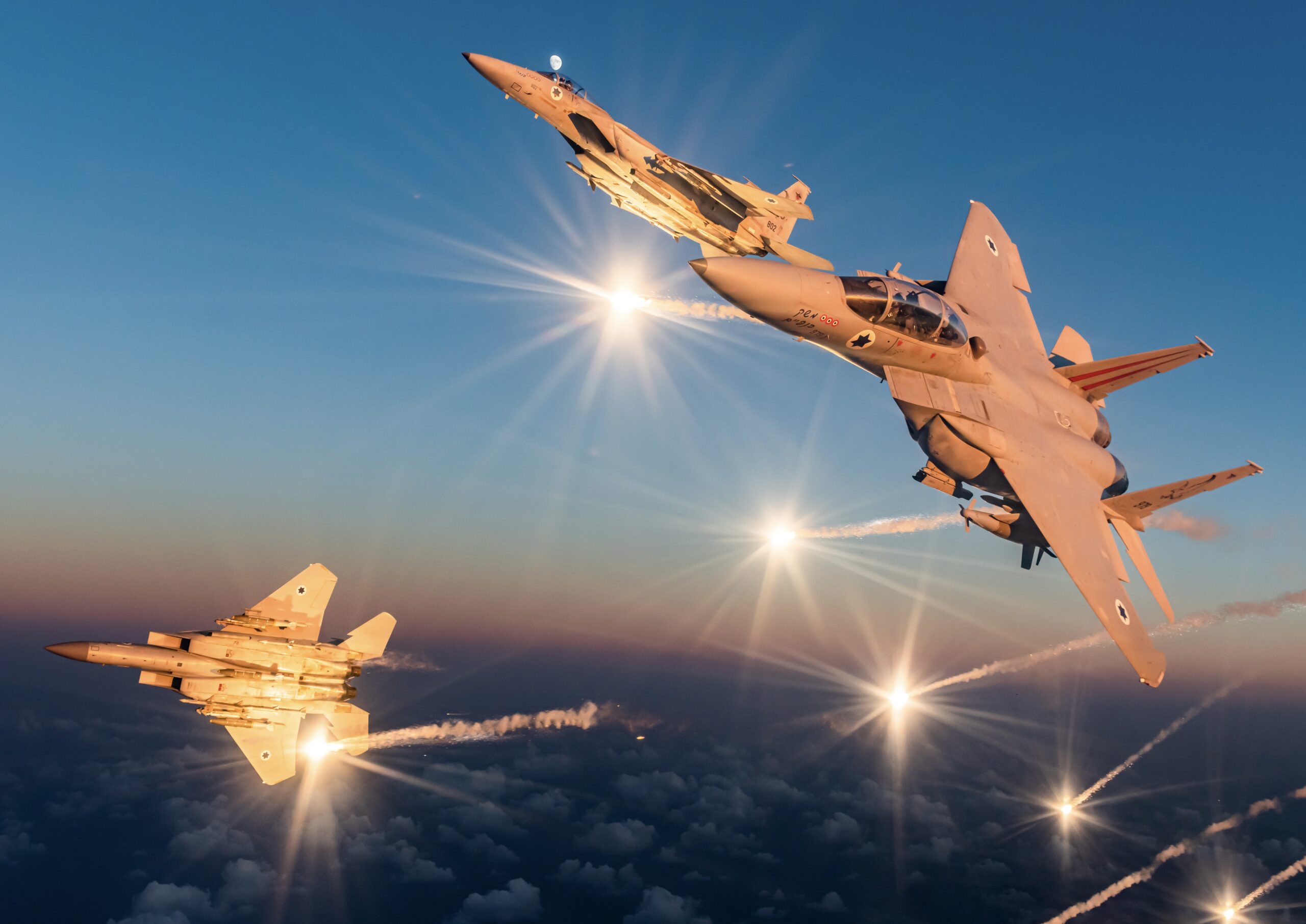
Today’s Baz, therefore, is very much a ‘mud mover’ as well as an air superiority platform. The aircraft’s impressive range, aided by the CFTs, means it’s a good fit for the kinds of long-range offensive missions that the IAF has been flying against targets in Syria, for example. As long ago as the 1985 attack on the Palestine Liberation Organization (PLO) headquarters in Tunis, the Tunisian capital. In an operation known as Wooden Leg, the Baz (including jets from the “Tip of the Spear” Squadron) demonstrated an ability to fly missions of unprecedented length for the IAF. The weapons used by the Baz on that occasion were GBU-15 electro-optically-guided glide bombs.
Since then, however, the Baz has undergone upgrades that provide a much more sophisticated air-to-ground capability.
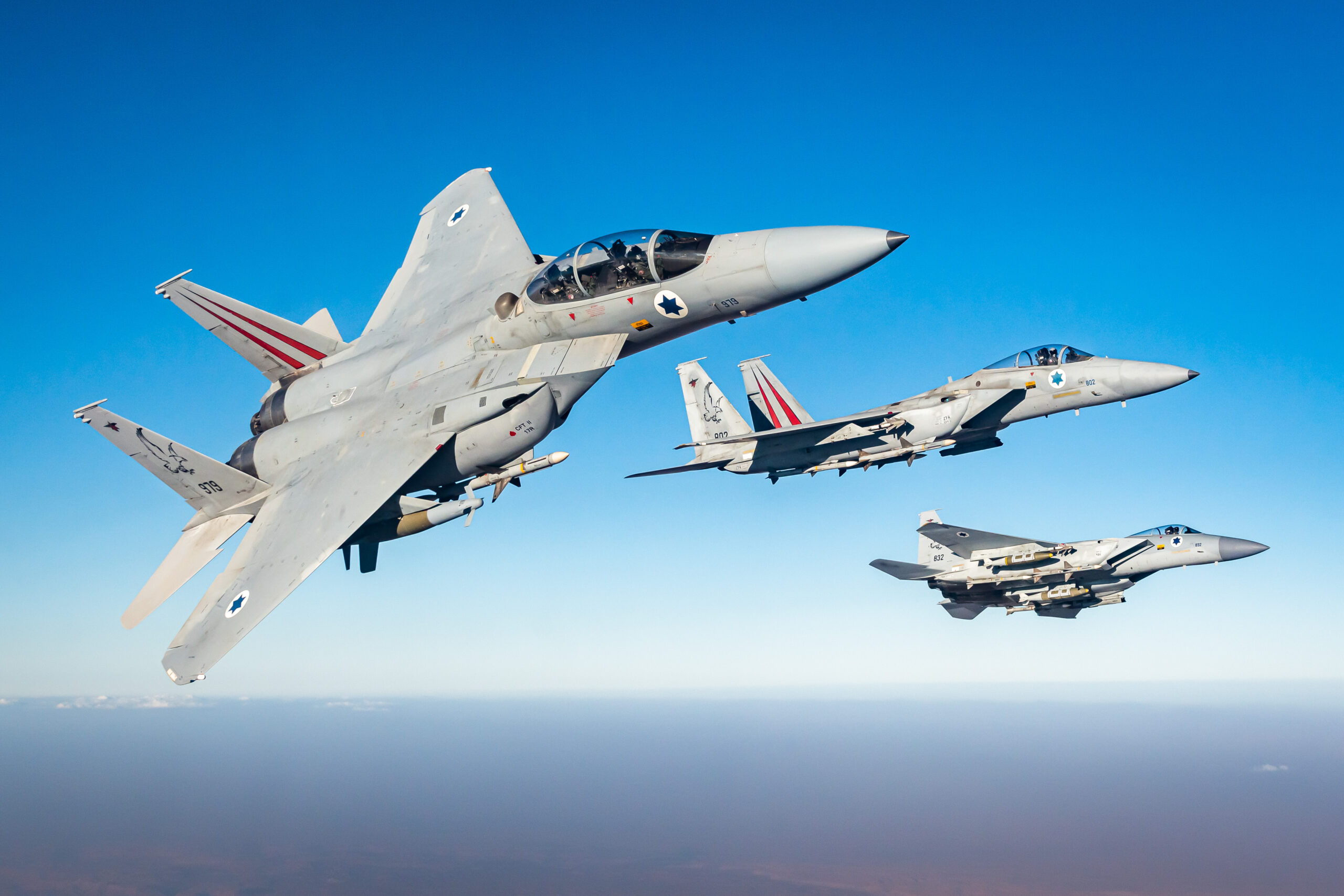


Between 1995 and 2005, the jets were brought up to Improved Baz standards as part of their scheduled maintenance at Tel Nof. This brings them closer to the strike-optimized F-15I Ra’am in many respects, adding compatibility with the aforementioned JDAM and SPICE.
The Improved Baz also received air-to-air enhancements, including the Python 4/5, which can be used in conjunction with the Elbit Display And Sight Helmet (DASH) for off-boresight missile shots and better situational awareness. The pilot also benefits from new multifunctional displays in the cockpit. The D-models have also gotten a major satellite communications upgrade as seen by the large satcom dome behind the canopy and the environmental control system vent. It is thought they would work as ‘quarterbacks’ and data-fusion and relay platforms of sorts, while also delivering standoff munitions, during long-range missions.
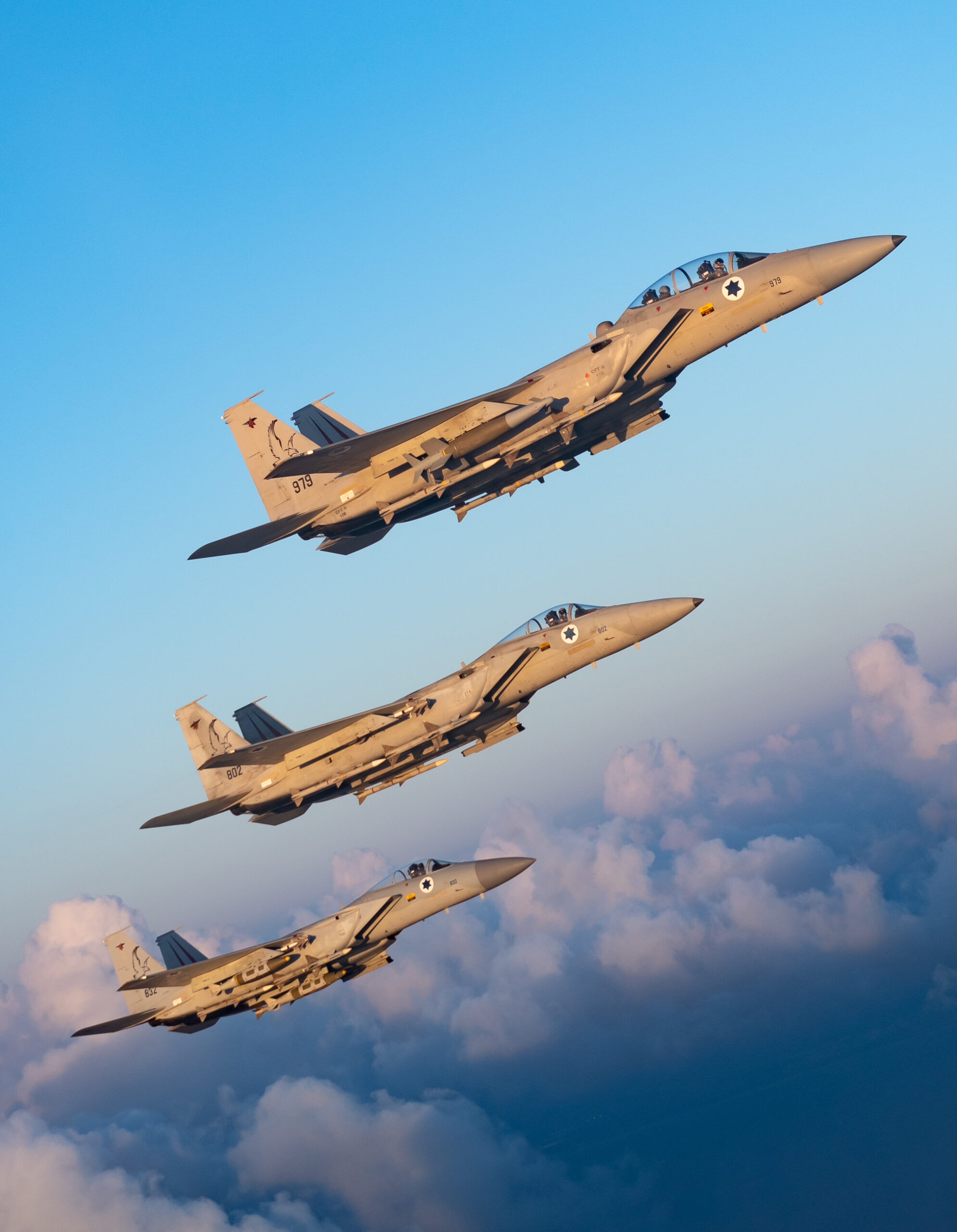

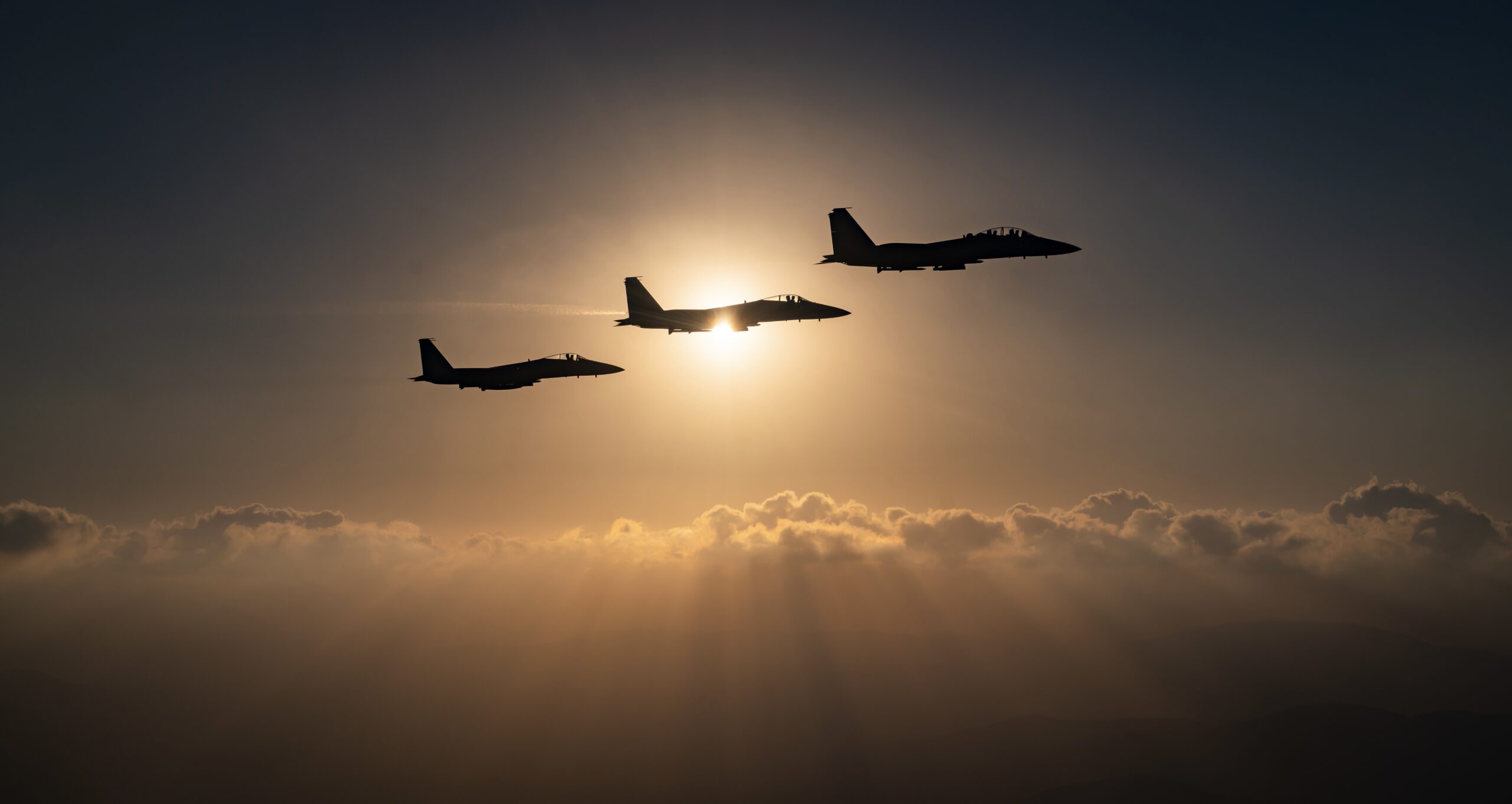
While the Baz remains an impressive air superiority fighter, 46 years after the first example touched down in Israel, the versatility of the jet means it’s now found a role in the kinds of low-intensity warfare that have characterized the IAF’s campaigns since the beginning of the 21st century.
Working alongside surveillance drones to provide real-time data, the Baz was involved in the Second Lebanon War in 2006, striking Hezbollah targets in Lebanon, including hunting missile launchers.
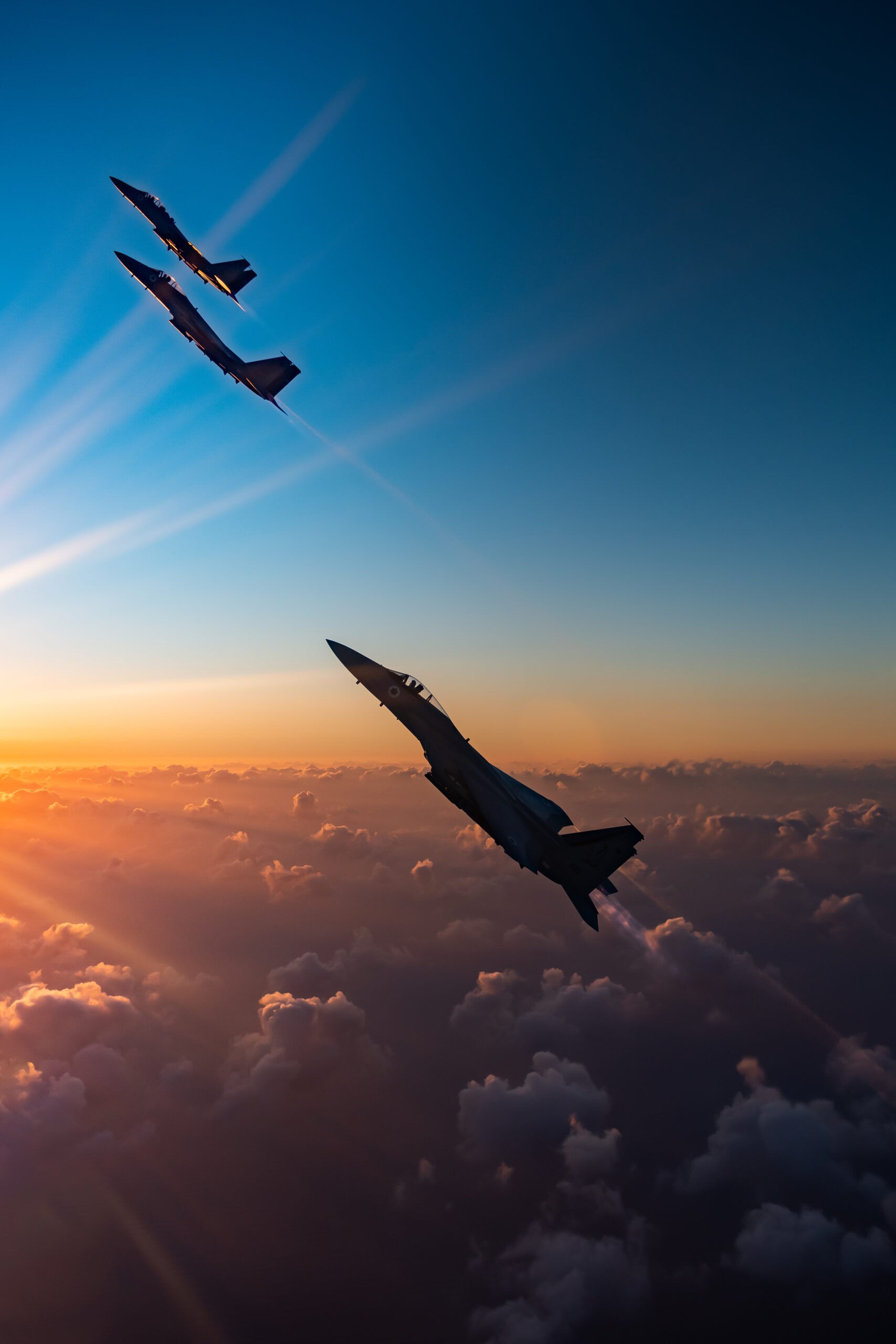


The Baz fleet has also been committed in successive campaigns against Hamas in the Gaza Strip. During Operation Pillar of Defense in 2012, for example, these jets were noted flying precision strikes with JDAMs.
The continued value of the Baz to the IAF is beyond doubt and it’s no surprise that there have been repeated suggestions that an order for Advanced F-15s (broadly similar to the U.S. Air Force’s F-15EX) could be on the cards. The fact that there has even been discussion that a new Eagle order could be favored over buying more F-35I Adir stealth fighters goes to show that, in certain scenarios, the best replacement for an F-15 may well be another (far more capable) F-15.


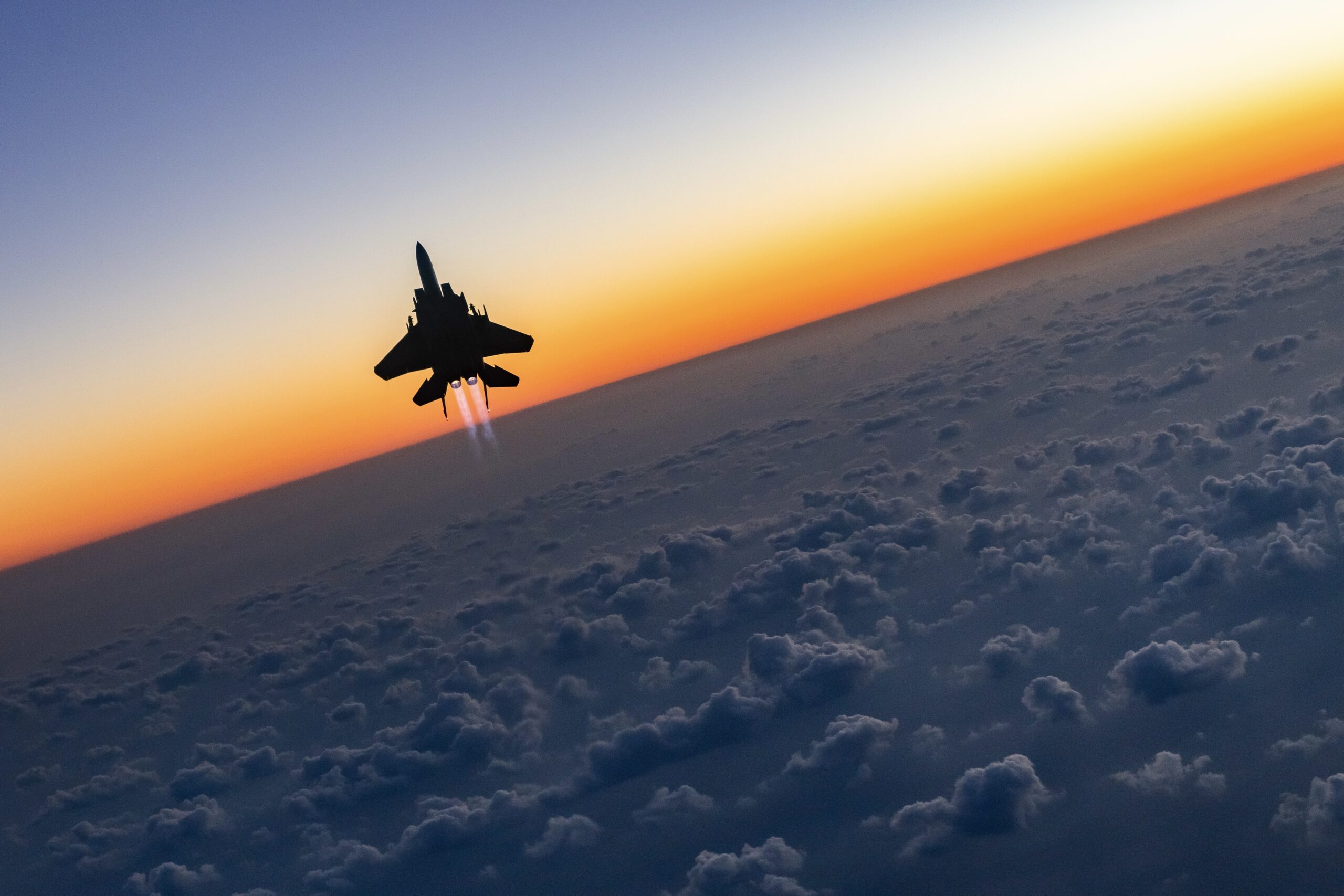

The Adir certainly has an important niche role for penetrating missions within contested airspace, as well as unrivaled electronic intelligence collecting capabilities, but an F-15 with advanced avionics operating alongside it brings its own benefits. These include carrying heavier and more varied weapons loads over long distances.
In the meantime, the IAF is continuing to get good value out of older F-15A-to-Ds, including nine former U.S. Air National Guard F-15Ds that were transferred as Excess Defense Articles in 2016. At one point, it was thought these may be intended as a source of spares, but instead, they have been enthusiastically integrated into the Baz fleet. With many more USAF F-15C/Ds being retired, many of which have been upgraded with a new wide-area display and AN/APG-63(V)3 AESA radar, the IAF could acquire some of these examples to bolster its F-15 fleet. In fact, the service could be waiting for this opportunity instead of buying new Eagles, a possibility we have explored in-depth before.
With this in mind, it would come as no surprise if Israel does revisit the F-15 again in the future.
Contact the author: thomas@thedrive.com
